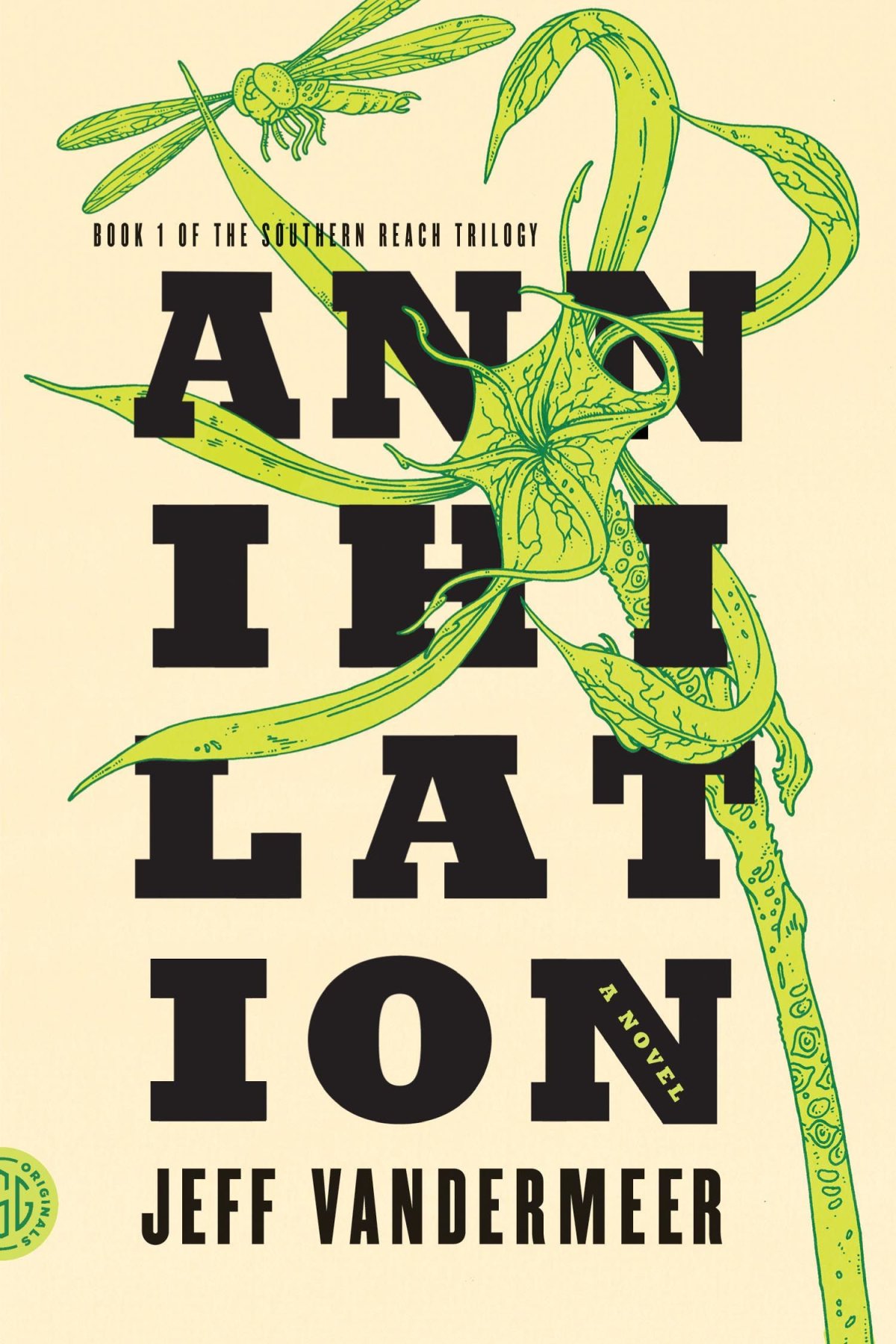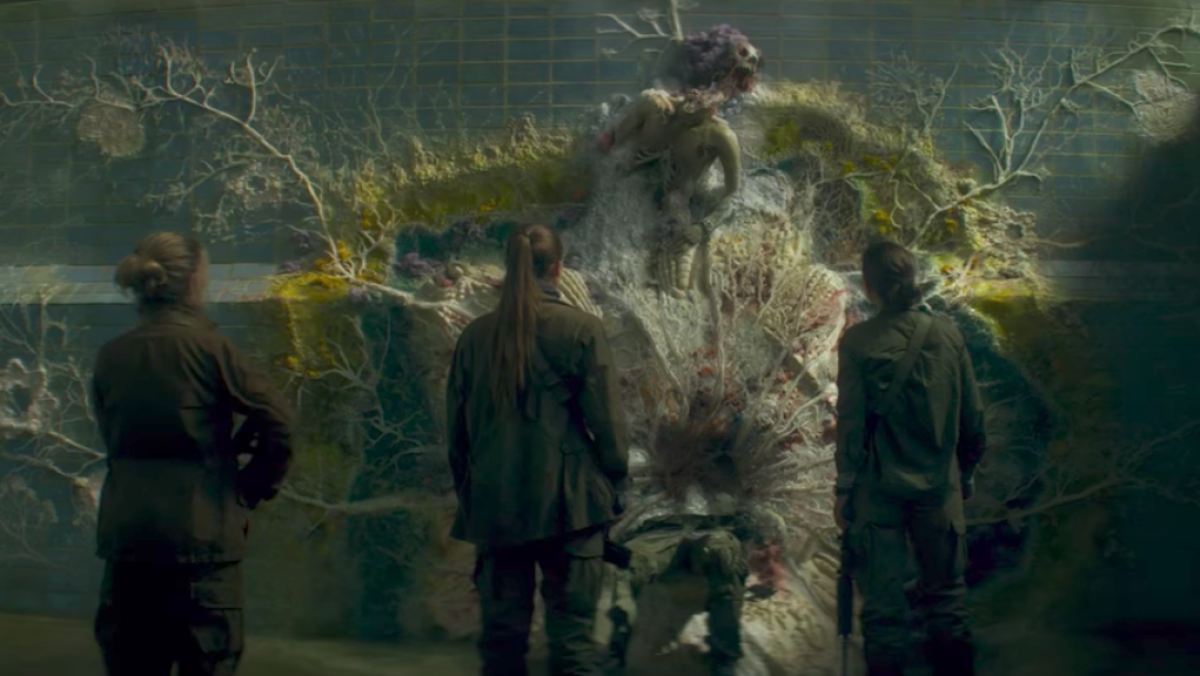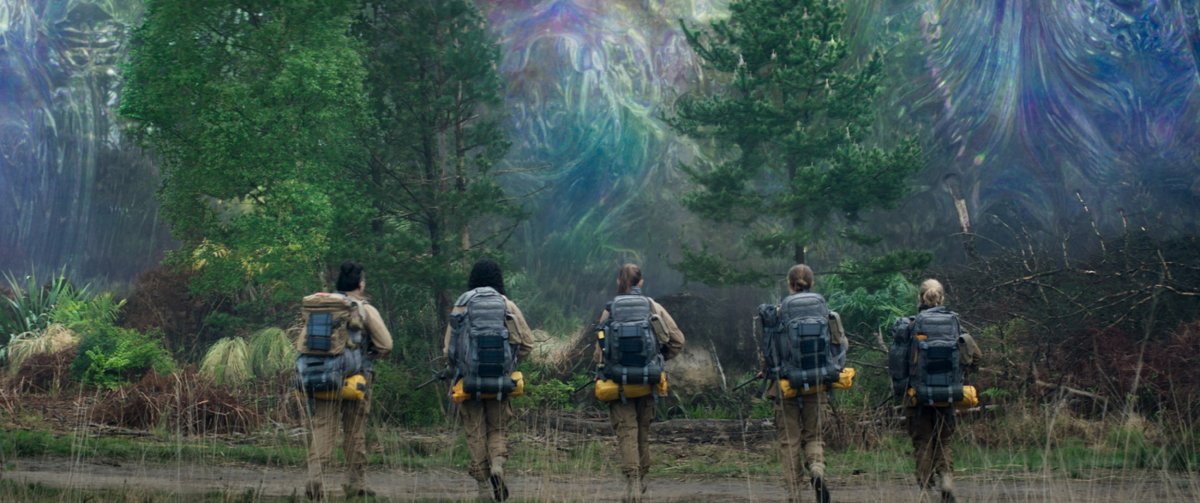
If you're a fan of Jeff VanderMeer's novel Annihilation and you head to the multiplex this weekend to see Alex Garland's adaptation of it, you may be in for a surprise. The sci-fi horror film, based very loosely on the book, is about a malignant life form that coils its roots into something recognizable—a plant, a crocodile, a human—and spins out into something entirely new. It turns out that that process of manipulating life is similar to Garland's take on the source material.
Annihilation the movie barely resembles its source material. In the novel, four unnamed female scientists explore a bizarre, largely unexplained landmass on earth called Area X. The book is written in the form of the biologist's field journal, and her entries become less coherent over time. Garland's film takes a decidedly different, more palatable approach. He adds characters, changes the basic plot at every turn and creates new monsters while dumping others. The book is part one of VanderMeer's Southern Reach trilogy—which includes Authority and Acceptance—and Garland ignores the other books entirely.
Speaking with Nerdist, the writer-director said he only intended to ever adapt Annihilation—and he could only do it his way. "The act of reading [the book] was like a dream," he explained, "and I think it allowed us to not do a literal, faithful adaptation. 'Cause I couldn't see how to do that."

Garland has a point. VanderMeer comes from a school of sci-fi novelists who value emotional resonance over meticulous plotting, which makes it inappropriate to compare his Southern Reach novels to other, pulpier novel series (such as Ann Leckie's Imperial Radch trilogy or Orson Scott Card's Ender books). In the Annihilation novel, none of VanderMeer's characters have names or backstories, and so much of what occurs is left up to interpretation that it's plausible for two readers to conclude entirely different things about Area X.
Not so in Garland's film. The heroine, Lena (Natalie Portman), has a history told through flashbacks, and the entire band of scientists harbors secrets of their own. Both VanderMeer and Garland have said in interviews that they consider their works as adjacent, but entirely separate, pieces of art. In that way, Annihilation is a new kind of adaptation, one that suggests creators should be free to consider source text more of a sandbox for free play than a list of imperatives.
But that means any reader who walks into Annihilation expecting a one-to-one adaptation fundamentally misunderstands the relationship between the book and the film. To help make sense of things, here are the primary changes Garland made to VanderMeer's Southern Reach story.

An explanation for Area X
VanderMeer's novels focus heavily on humanity's reaction to Area X, and the second book, Authority, is set primarily inside the Southern Reach research facility. By the time readers get to the end of the trilogy in Acceptance, Area X has enveloped the building, signifying that a new age has dawned on Earth. There are hints at a biological system inside Area X—the unnamed biologist finds human cells in the plant and animal life she studies—but there's no outright explanation for what the entity in Area X "wants."
For the film, Garland includes a pretty succinct description of what the entity does to earthbound life-forms. Josie (Tessa Thompson) tells her team members that life inside "the shimmer" is a prism on every level. Whatever alien entity powers life inside Area X, according to Josie, takes the information it's given, including human cells, and simply filters it through that prism, creating life-forms that feel related to what we know, but are only partial reflections and combinations of unlike things.
These prismatic, beautiful space tumors find their roots in the biology of creatures we recognize—crocodiles, flowering plants, human beings—and once they take hold, they spin out into something terrifying. We see vaguely human-shaped flowering plants growing in a field, and once tendrils from those plants worm their way into Josie's wounds, she peacefully gives herself over to them, becoming another version of the humanoid plants. When Lena searches for Josie later in the film, she is unable to figure out which of these structures is her teammate.

Some additional dudes, and an infidelity plot
In VanderMeer's novel, the biologist character who forms the basis for Natalie Portman's Lena has a husband who ventured into Area X on a prior mission but never returned. She enters Area X herself and is motivated to stay by her intellectual and professional interest in the alien entity. In Garland's Annihilation, Lena's husband, Kane (Oscar Isaac), is the only human being to escape Area X, and it's heavily implied that Lena enters the shimmer as a kind of penance. Before she enters Area X, she tells her unconscious husband, "I know what I have to do," and later we hear her say she has to "atone" for something, just before we learn about the affair she was having.
That's not just the addition of a character—that's a complete rewrite of the story's heroine. Rather than an academic in search of the truth, she's now more of a self-destructive, unfaithful woman hoping to finish her husband's mission in order to make up for her infidelity. If there's a weak point in Garland's film, it's that he didn't trust a female lead to carry his film without a backstory that involved two men and infidelity.
A new crescendo
When Lena and her research team reach their target destination in Area X—a meteor crash site at a lighthouse—she finds a more coherent and interesting threat than anything the novel offers. Garland's version of Annihilation's alien isn't angry at humanity—it's just an advanced life form that seems curious about the mechanics of humans but doesn't feel any empathy or recognize us as anything other than plant life. It wants to pull apart everything in its path, regardless of whether that's painful or scary, study how it works and re-create it with its own material. Ventress (Jennifer Jason Leigh) even gives herself over to this new entity in a very painful-looking process which she literally calls "annihilation." The threat in the film isn't just death, it's torture and then obsolescence—the entity is simply playing around with the building blocks that make up life on Earth.
When the story ends, we realize that neither Lena nor Kane escaped Area X intact. As Lena tells her teammates halfway through the film, the entity is inside her, and she learns in the lighthouse that the Kane who made it out of Area X is actually an alien version of her husband, something the entity created after screwing around with his body. Lena, with the entity swimming around in her bloodstream, asks her not-husband, "You're not really Kane, are you?" Oscar Isaac, playing an alien body-snatcher version of his character, looks blankly at her and says, "I don't think so." They embrace anyway, both having been changed at the molecular level by whatever life-form created Area X.
The final scene may feel ham-fisted to some, and it's certainly not as lyrical and mysterious an ending as VanderMeer gave his novel. But it's a gut punch all the same.
Annihilation is now playing in theaters nationwide.
Uncommon Knowledge
Newsweek is committed to challenging conventional wisdom and finding connections in the search for common ground.
Newsweek is committed to challenging conventional wisdom and finding connections in the search for common ground.
About the writer
Emily is a culture and entertainment writer living in Manhattan. Previously, she ran the culture section at Inverse and has been published in The Daily ... Read more
To read how Newsweek uses AI as a newsroom tool, Click here.








